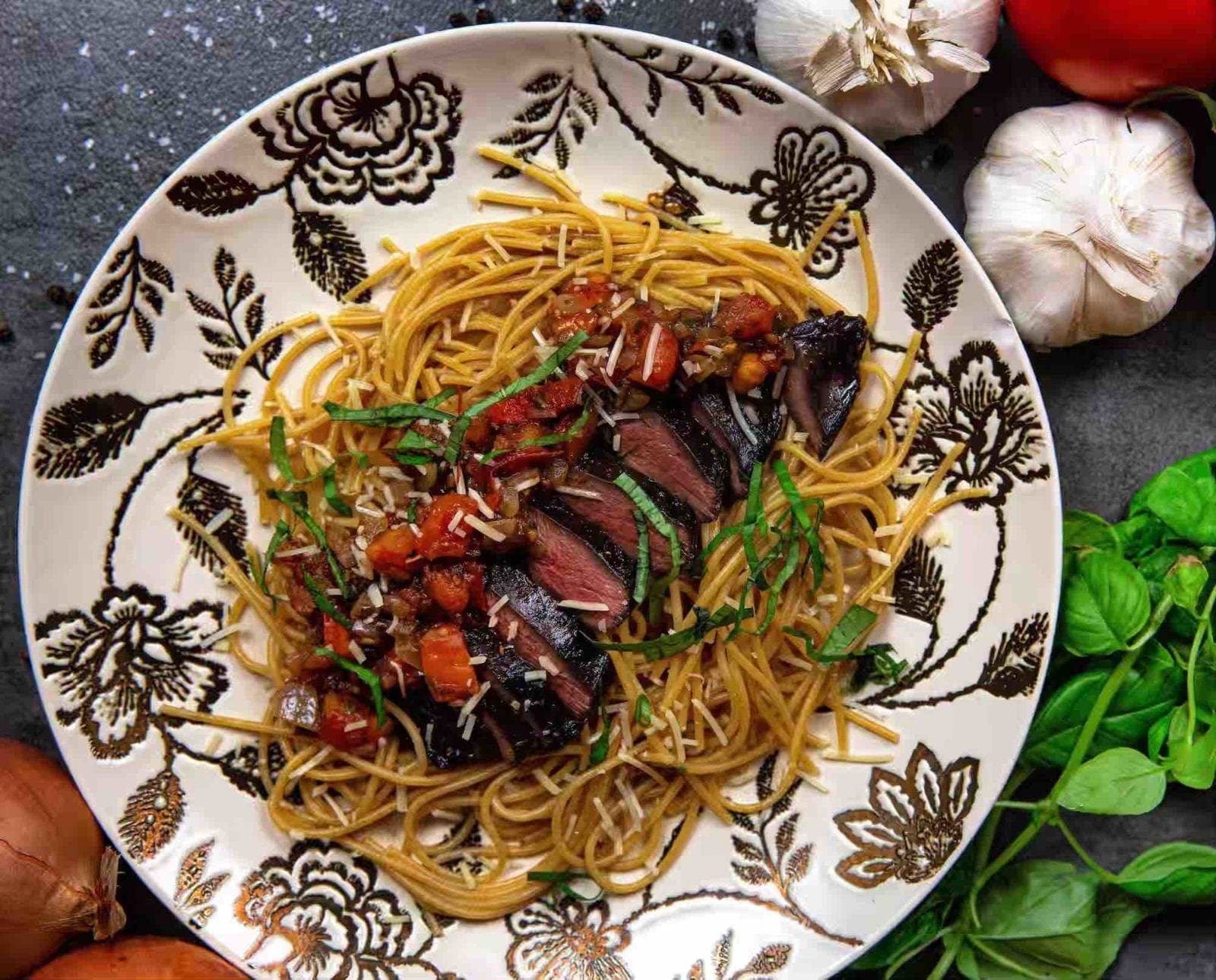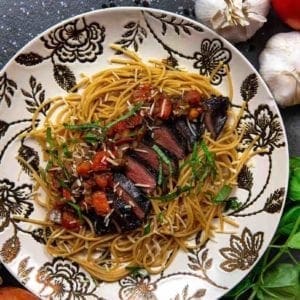
Jack Hennessy grew up in the South Suburbs of Chicago…
Fresh ingredients with bright flavors pair well with the red meat of the greater prairie chicken
As discussed in last week’s Prairie Chicken Meat Profile, it is one of those opposite birds with the breasts being a darker red than the thighs. Because of this characteristic, it is best served medium-rare, just like a steak or waterfowl breast. In my opinion, because of this red-meat trait, this bird offers a lot more versatility in terms of suitable recipes. That ultimately leads to a deeper sense of culinary creativity, something I especially love when it happens with wild game.
Please know that although this recipe calls for prairie chicken, you can use any upland bird. If serving white-meat birds such as pheasant, just make sure to fully cook the breast to 160 degrees F (versus the 130-135 F internal temperature for prairie chicken breasts).
There are a lot of bright notes in this dish that pair perfectly with warmer weather (hint: it’s a great summertime dish). The recipe does benefit from fresh ingredients—the fresher the better. Invest in fresh and you’ll notice the difference with this meal. For the perfect medium-rare cook here, you’ll want to pay close attention to Step 8 for how to properly reverse-sear this bird’s breasts which, in my opinion, is the only method worth applying for cooking any red meat perfectly.
Enjoy! Reach out to me on Instagram (@WildGameJack) with any questions or comments and be sure to check out my other wild game recipes and cooking instructions here.

Prairie Chicken Pomodoro
Ingredients
- 2 prairie chicken breasts skinless, tenderloins removed
- 12 oz whole grain spaghetti
Marinade
- ½ cup balsamic vinegar
- ¼ cup olive oil
- 1 tsp kosher salt
- 1 Tbsp dry Italian herb mix (marjoram, thyme, rosemary, sage, oregano, basil)
Sauce
- 2 lbs fresh-on-vine tomatoes diced
- 1 med yellow onion finely diced
- ½ tsp salted butter
- 1 tsp kosher salt
- 2 tsp garlic freshly minced
- ¼ cup basil freshly minced
- ¼ cup balsamic vinegar
- 2 Tbsp dry red wine
- Black pepper freshly cracked
Garnish (optional)
- Fresh basil chiffonade cut
- Parmesan freshly grated or shredded
Instructions
- Combine the marinade ingredients and soak prairie chicken breasts for 1 hour at room temperature
- Preheat oven to 200 degrees Fahrenheit
- In a medium saucepan heated on medium-low, sauté the finely diced onions in ½ teaspoon salted butter and lightly dust with kosher salt and freshly cracked black pepper
- When the onions are slightly soft and seared, add 2 teaspoons freshly minced garlic and stir for couple minutes to release the aroma
- Add one pound of the diced tomatoes, followed by ½ teaspoon kosher salt and a dusting of freshly cracked black pepper. Add the next pound of diced tomatoes, along with another ½ teaspoon kosher salt and a little more freshly cracked black pepper.
- Measure out a packed ¼ cup of fresh basil, then finely mince it and add to the saucepan. Add ¼ cup balsamic vinegar along with 2 tablespoons of dry red wine. Stir all ingredients together, taking care to not crush the tomatoes.
- Heat saucepan on low for approximately 20-30 minutes. The goal is to create a sauce while also maintaining the texture of the tomatoes.
- Cook prairie chicken breasts on a rack (not in a pan) for 10 minutes at 200 degrees. Remove from oven and add to a cast iron skillet preheated to 550 degrees and sear each side for 45 seconds. Allow to rest, uncovered, for 10 minutes before serving.
- Boil pasta according to package instructions and strain when al dente, approximately 6-7 minutes depending on type
- To serve, slice the prairie chicken breasts and place over 6 ounces spaghetti. Top with sauce. Garnish with fresh basil (chiffonade cut) and fresh parmesan (either grated or shredded).
Nutrition
Jack Hennessy grew up in the South Suburbs of Chicago and didn't start hunting until he attended graduate school in Spokane, Washington, at the age of 26. Hennessy began work in professional kitchens in high school but didn't start writing wild game recipes until he joined the Spokesman-Review in 2014. Since then, his recipes have appeared with Petersen's Hunting, Backcountry Journal, Gun Dog Magazine, among many others. He now lives with his Wirehaired Vizsla, Dudley, in Wichita, Kansas.



